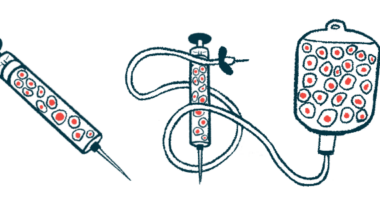New Roadmap of Dopaminergic Neurons May Improve Cell Therapy
Researchers mapped maturation steps of nerve cells lost in Parkinson's

Scientists have created a roadmap of the maturation steps of dopaminergic neurons — the nerve cells progressively lost in Parkinson’s disease — from human stem cells.
Their work may help identify potential ways to optimize this process in the lab for new Parkinson’s cell therapies.
“Our findings provide valuable resources for identifying gene expression patterns … and can be utilized to guide human [dopaminergic neuron] differentiation,” the researchers wrote.
The new model was detailed in “Single-cell transcriptomics reveals the cell fate transitions of human dopaminergic progenitors derived from hESCs,” a study published in the journal Stem Cell Research & Therapy.
Parkinson’s disease is characterized by the progressive loss of dopaminergic, or dopamine-producing, neurons in a midbrain region of the brain called the substantia nigra. Dopamine is a major chemical messenger in the brain.
Current standard therapies for Parkinson’s focus mainly on restoring dopamine signaling in the brain to reduce the severity of disease symptoms. But research efforts are increasingly focused on cell-based therapy to replace lost dopaminergic neurons — tackling the neurodegenerative disorder’s underlying cause.
In the lab, several types of human stem cells have been used to generate dopaminergic neurons, which showed promise when transplanted to both animal models and Parkinson’s patients.
However, this maturation process is known to generate cells other than dopamine-producing neurons, limiting the purity of the final product. This potentially influences efficacy and increases the risk of adverse events.
Mapping maturation of dopaminergic neurons
“The regulation of DA [dopaminergic] cell fate is currently not well characterized, and more efficient and reliable differentiation [maturation] or purification strategies are urgently needed,” the researchers wrote.
With this in mind, a team of researchers in China comprehensively analyzed the maturation process of dopaminergic neurons from lab-grown human stem cells derived from embryos.
The researchers performed single-cell RNA sequencing — which provides information on gene activity on a single-cell level — to characterize the cells formed during dopaminergic neuron maturation.
Results from the nearly 20,000 cells analyzed at different points of the maturation process showed that several cell populations, dopaminergic and non-dopaminergic, were generated at different stages.
Notably, early dopaminergic neuron progenitors appeared on day 17, while young dopamine-producing neurons emerged on day 25. In contrast, nondopaminergic populations were first detected on day 11, and continued to emerge at several subsequent stages, including day 25.
Trajectory mapping revealed three key lineage branch points in dopaminergic neuron maturation. These were characterized by several genes, suggesting their potential involvement in the fate choice of dopaminergic neurons.
One such gene, LGI1, was specific to early dopaminergic neuron progenitors — precursor cells — that were positive for the midbrain marker EN1. LGI1 provides the instructions to produce a protein of the same name, which was previously shown to have a role in neuronal growth.
“EN1 was found to be a key marker specific for DA progenitors, consistent with previous work showing that EN1 is essential for the repression of undesired cell types,” the researchers wrote.
Moreover, promoting the overactivation of LGI1 on days 7 and 11 significantly increased the proportion of dopaminergic neurons, based on their positivity for tyrosine hydroxylase, an enzyme that generates dopamine.
“Our results indicate that LGI1 contributes to inducing DA progenitor fate,” the team wrote.
Further analyses revealed that the main nondopaminergic cell type of the final product (day 25) were choroid plexus epithelial cells (CPECs). CPECs play a central role in restricting the passage of molecules in circulation into the liquid, called the cerebral spinal fluid, that surrounds the brain and spinal cord.
The activity of 817 genes significantly differed between dopaminergic neurons and CPECS, which were found to specifically produce a cell surface receptor protein called CD99.
Sorting of CD99-negative cells resulted in the elimination of CPECs and improved the purity of dopaminergic neuron progenitors, highlighting CD99 as a “surface marker for the elimination of major contaminant cells in the final cell product,” the team wrote.
“Our study provides the single-cell [gene activity] landscape of in vitro [in the lab] DA differentiation, which can guide future improvements in DA preparation and quality control for [Parkinson’s disease] cell therapy,” the researchers concluded.







